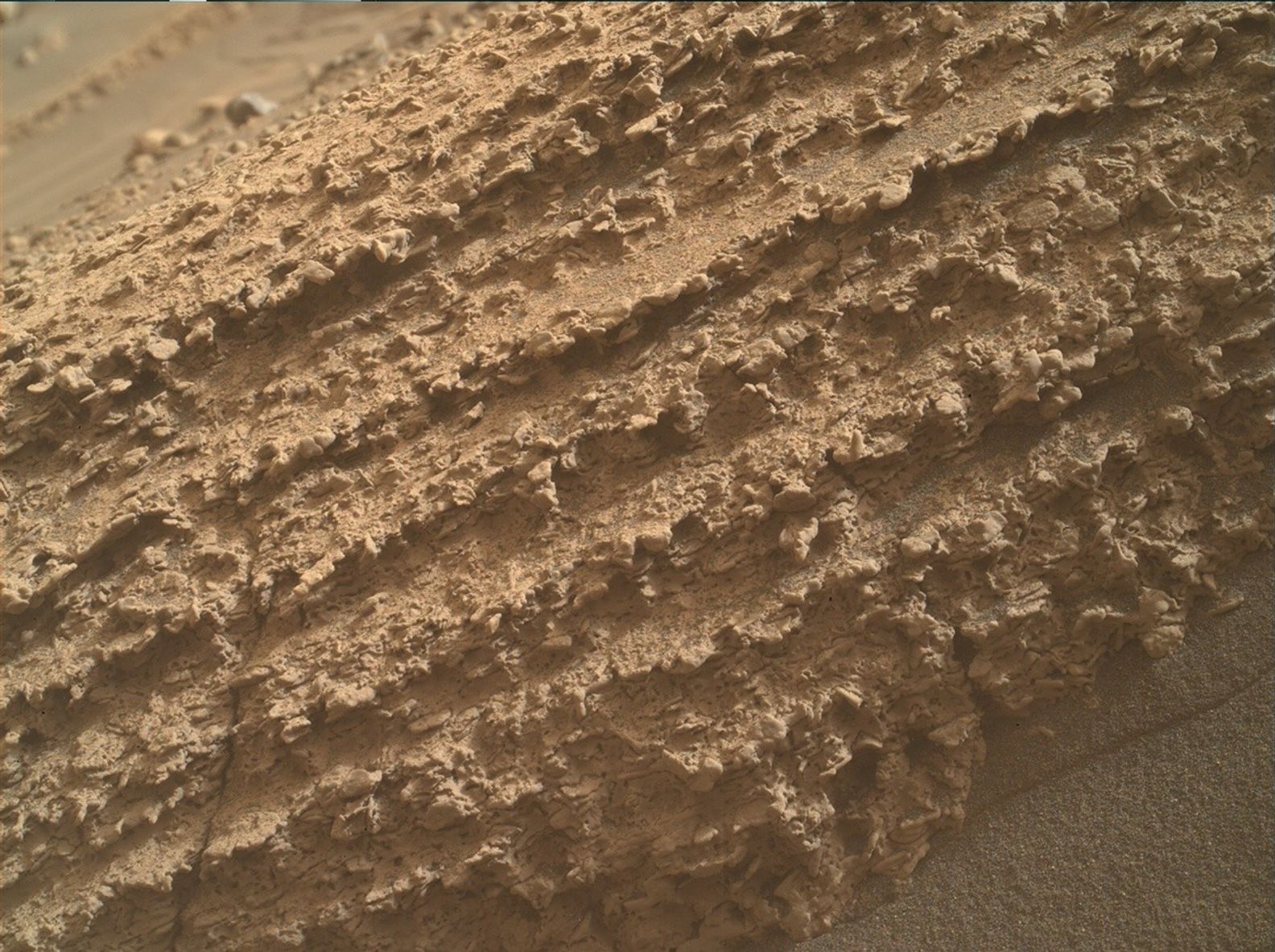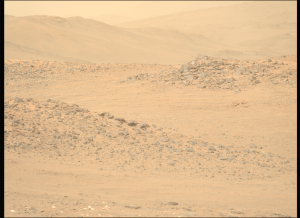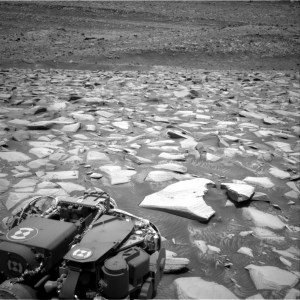Curiosity Navigation Curiosity Home Mission Overview Where is Curiosity? Mission Updates Science Overview Instruments Highlights Exploration Goals News and Features Multimedia Curiosity Raw Images Images Videos Audio Mosaics More Resources Mars Missions Mars Sample Return Mars Perseverance Rover Mars Curiosity Rover MAVEN Mars Reconnaissance Orbiter Mars Odyssey More Mars Missions The Solar System The Sun Mercury Venus Earth The Moon Mars Jupiter Saturn Uranus Neptune Pluto & Dwarf Planets Asteroids, Comets & Meteors The Kuiper Belt The Oort Cloud 2 min read
Sols 4348-4349: Smoke on the Water  NASA’s Mars rover Curiosity created this composite image from its Mars Hand Lens Imager (MAHLI), located on the turret at the end of the rover’s robotic arm. An onboard process, focus merging, makes a composite of images of the same target — acquired at different focus positions — to bring all (or, as many as possible) features into focus in a single image. Curiosity performed this merge on Oct. 27, 2024, sol 4346 (Martian day 4,346) of the Mars Science Laboratory Mission, at 15:45:47 UTC. NASA/JPL-Caltech/MSSS Earth planning date: Monday, Oct. 28, 2024
NASA’s Mars rover Curiosity created this composite image from its Mars Hand Lens Imager (MAHLI), located on the turret at the end of the rover’s robotic arm. An onboard process, focus merging, makes a composite of images of the same target — acquired at different focus positions — to bring all (or, as many as possible) features into focus in a single image. Curiosity performed this merge on Oct. 27, 2024, sol 4346 (Martian day 4,346) of the Mars Science Laboratory Mission, at 15:45:47 UTC. NASA/JPL-Caltech/MSSS Earth planning date: Monday, Oct. 28, 2024
Before the science team starts planning, we first look at the latest Navcam image downlinked from Curiosity to see where the rover is located. It can be all too easy to get lost in the scenery of the Navcam and find new places in the distance we want to drive towards, but there’s so much beauty in the smaller things. Today I’ve chosen to show a photo from Curiosity’s hand lens camera, MAHLI, that takes photos so close that we can see the individual grains of the rock.
The planning day usually starts by thinking about these smaller features: What rocks are the closest to the rover? What can we shoot with our laser? What instruments can we use to document these features? Today we planned two sols, and the focus of the close-up contact science became a coating of material that in some image stretches looks like a deep-purple color.
We planned lots of activities to characterize this coating including use of the dust removal tool (DRT) and the APXS instrument on a target called “Reds Meadow.” This target will also be photographed by the MAHLI instrument. The team planned a ChemCam LIBS target on “Midge Lake” as well as a passive ChemCam target on “Primrose Lake” to document this coating with a full suite of instruments. Mastcam will then document the ChemCam LIBS target Midge Lake, and take a mosaic of the vertical faces of a few rocks near to the rover called “Peep Sight Peak” to observe the sedimentary structures here. Mastcam will also take a mosaic of “Pinnacle Ridge,” an area seen previously by the rover, from a different angle. ChemCam is rounding off the first sol with two long-distance RMI mosaics to document the stratigraphy of two structures we are currently driving between: Texoli butte and the Gediz Vallis channel.
In the second sol of the plan, after driving about 20 meters (about 66 feet), Curiosity will be undertaking some environmental monitoring activities before an AEGIS activity that automatically selects a LIBS target in our new workspace prior to our planning on Wednesday morning.
Written by Emma Harris, Graduate Student at Natural History Museum, London
Details Last Updated Oct 30, 2024 Related Terms Blogs
Keep Exploring Discover More Topics From NASA Mars
Mars is the fourth planet from the Sun, and the seventh largest. It’s the only planet we know of inhabited…

Explore this collection of Mars images, videos, resources, PDFs, and toolkits. Discover valuable content designed to inform, educate, and inspire,…

Each robotic explorer sent to the Red Planet has its own unique capabilities driven by science. Many attributes of a…

Mars Exploration: Science Goals
The key to understanding the past, present or future potential for life on Mars can be found in NASA’s four…



 2 min read A Spooky Soliday: Haunting Whispers from the Martian Landscape
2 min read A Spooky Soliday: Haunting Whispers from the Martian Landscape
 3 min read Sols 4345-4347: Contact Science is Back on the Table
3 min read Sols 4345-4347: Contact Science is Back on the Table
 4 min read Sols 4343-4344: Late Slide, Late Changes
4 min read Sols 4343-4344: Late Slide, Late Changes
